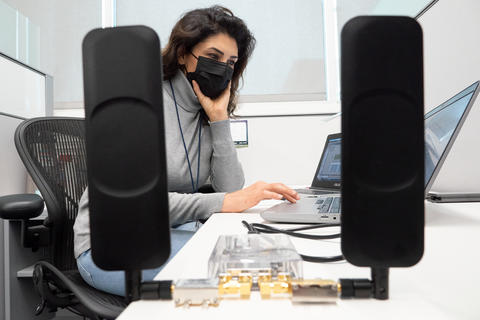
When the Wi-Fi is wonky or there’s bad cellphone reception, Susanna Mosleh can’t ignore it. After all, her research at NIST is about finding solutions to those problems and training our devices to find the best way to share the information superhighway.
Wireless devices share a spectrum of invisible radio frequencies, similar to cars using the same lanes on a highway. As more devices need the same lanes, traffic jams are pretty common, causing data lag and slow service for everyone. Transmitters seek out less-crowded frequencies in a lengthy process by trying each available frequency one at a time.
The spectrum-sharing problem intrigued Susanna so much that she switched schools and started her Ph.D. from scratch for the opportunity to work with top-notch scientists and industry. It’s a professional pivot that ultimately brought her to NIST in 2019, where she now works as a postdoctoral associate through the NIST Professional Research Experience Program.
Recently, Susanna and her colleagues have been tapping into artificial intelligence to train transmitters to choose the best frequencies using algorithms called Q-learning. This technique rewards the transmitter with more network throughput if it chooses optimal frequencies on that superhighway, and punishes it with lower data rates for choosing crowded, slower lanes.
It turns out the transmitters learn really quickly this way. With Q-learning, simulation results show that transmitters found the best open lane about 5,000 times faster than they did with the current trial-and-error process.
Read more about Susanna’s research and spectrum-sharing work.
Follow us on social media for more like this from all across NIST!

